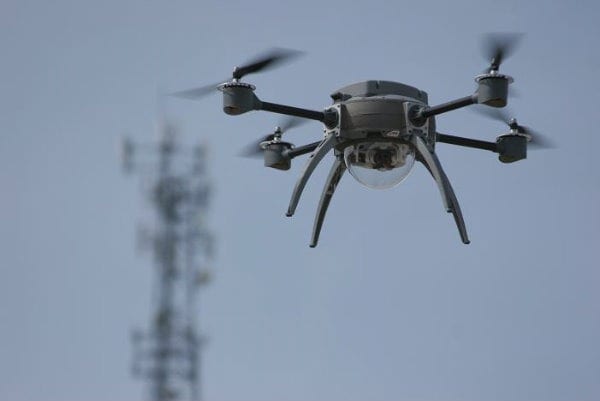
Sea surface temperatures in the tropical South Atlantic Ocean can be used to accurately forecast, by up to four months, malaria epidemics thousands of miles away in northwestern India, a University of Michigan theoretical ecologist and her colleagues have found.
Colder-than-normal July sea surface temperatures in the tropical South Atlantic are linked to both increased monsoon rainfall and malaria epidemics in the arid and semi-arid regions of northwest India, including the vast Thar desert, according to Mercedes Pascual and her colleagues, who summarize their findings in a paper to be published online March 3 in the journal Nature Climate Change.
Previous efforts to forecast malaria outbreaks in northwest India have focused largely on monsoon-season rainfall totals as a predictor of the availability of breeding sites for the Anopheles mosquitoes that transmit the disease. That approach provides about a month of lead time before outbreaks occur.
The new forecasting tool should improve public health in the region by increasing warning time, thereby informing decisions about treatment preparedness and other disease-prevention strategies, said Pascual, the Rosemary Grant Collegiate Professor of Ecology and Evolutionary Biology and a Howard Hughes Medical Institute investigator. Planning for indoor insecticide spraying, one widely used control measure, could benefit from the additional lead time, for example.
“The climate link we have uncovered can be used as an indicator of malaria risk,” Pascual said. “On the practical side, we hope these findings can be used as part of an early warning system.”
After being nearly eradicated in India, malaria re-emerged there in the 1970s. An estimated 9 million malaria cases occur in India annually.
Malaria in its epidemic form occurs primarily on the margins of the geographical distribution of the disease, in places like arid northwest India where environmental conditions are only episodically suitable for sustaining Anopheles mosquitoes.
Motivated by the desire for more accurate prediction of malaria risk at longer lead times, Pascual and her colleagues analyzed epidemiological records of malaria incidence in northwest India and used statistical and computer climate models to test potential links between sea surface temperatures, monsoon rains in northwest India, and malaria epidemics there.
They found that most malaria epidemics in northwest India, which peak in October or November, occur when rainfall in the preceding summer monsoon season equals or exceeds a rainfall threshold presumably required to support the growth of Anopheles mosquitoes.
The researchers looked for a correlation between global sea-surface temperatures and epidemic malaria in northwest India. They identified a broad region in the tropical South Atlantic, west of Africa, where cooler-than-normal sea-surface temperatures are significantly associated with increases in both monsoon rainfall and malaria incidence in northwest India.
The Latest Bing News on:
Malaria epidemic
- Afghanistan struggles with health crisis under Taliban ruleon April 30, 2024 at 10:57 pm
Afghanistan grapples with measles outbreaks and healthcare woes amid Taliban rule. Learn about the escalating health crisis in the region.
- Malaria cases drop in Mat Southon April 29, 2024 at 5:03 pm
MATABELELAND South has recorded a sharp decline in malaria cases during the first quarter compared to the same period last year on the back of measures put in place to tame the disease.
- Kenya distributes 15.3 mln malaria insecticidal nets targeting 27 mln peopleon April 29, 2024 at 9:44 am
NAIROBI, April 29 (Xinhua) -- The Kenyan Ministry of Health is distributing 15.3 million long-lasting insecticidal nets (LLINs) in 22 counties, targeting 27 million people at risk of malaria, a ...
- China helps Uganda fight malaria as global funding shrinkson April 27, 2024 at 5:04 am
For Milly Nakazzi, an assistant nursing officer at Uganda’s Kiruddu National Referral Hospital, the fact that at least six of every 10 patients she treats have malaria is business as usual. “The ...
- Are we are losing the battle against global malaria cases?on April 26, 2024 at 4:02 am
Malaria cases worldwide have not declined since 2015, prompting questions about stalled control efforts and emerging challenges.
- Madagascar: Malaria On the Rise With Healthcare Out of Reach in Madagascaron April 26, 2024 at 3:47 am
Press Release - Madagascar is one of the countries most affected by malaria. According to the Ministry of Public Health, the reported number of malaria cases in 2023 exceeded the national epidemic ...
- Blog: A renewed commitment to end the epidemic of malaria in the Commonwealth by 2030on April 24, 2024 at 5:00 pm
The mandate became a commitment to work towards ending the epidemic of malaria across the Commonwealth by 2030, in line with national, regional and global targets. This commitment marks a significant ...
- World Malaria Day 2024: Avoid these factors that increase malaria riskon April 24, 2024 at 6:20 am
Understanding what increases malaria risk is essential for designing comprehensive control strategies. On World Malaria Day 2024, here's what you need to know ...
- Uganda: Tayebwa asks MPs to prioritise malaria prevention in budget 2024on April 23, 2024 at 4:30 am
"This year we have put Shs25 billion in the budget for malaria testing kits. I think this is the first time, it is just the beginning," Tayebwa said.
- 70 districts move out of malaria epidemicon April 19, 2024 at 4:31 am
The Division of Malaria Control at the Health Ministry says the country has moved out malaria epidemic, which had affected over 70 districts.“We are completely out of the epidemic now,” Dr Jimmy Opigo ...
The Latest Google Headlines on:
Malaria epidemic
[google_news title=”” keyword=”malaria epidemic” num_posts=”10″ blurb_length=”0″ show_thumb=”left”] [/vc_column_text]The Latest Bing News on:
Malaria
- Rotary trains 317 health workers tackle malaria and malnutrition in Oyo, Lagos, and Ogun stateson May 1, 2024 at 6:31 pm
The Rotary Action Group for Reproductive Maternal and Child Health said that it had trained over 317 health professionals from 26 local governments in ...
- World Malaria Day: ClearlineHMO, Greenlife donate malaria aid to communityon May 1, 2024 at 3:06 am
Speaking at the event held at the Oba Palace, General Manager, Sales and Marketing, Clearline HMO, Olaoye Olubukola, said the outreach to commemorate World Malaria Day was aimed at helping the ...
- New monoclonal antibody vaccine slashes malaria risk in childrenon April 30, 2024 at 8:19 pm
A recent study demonstrates that the monoclonal antibody-based vaccine L9LS is safe for children aged 6 to 10 and significantly reduces the risk of malaria infection and clinical symptoms by 70% and ...
- Sarasota County prepares for mosquito season after last year’s malaria outbreakon April 30, 2024 at 3:29 pm
As we inch closer to some of the rainiest months of the year, residents can expect to see more mosquitoes out and about.
- Let's recommit to strategies for malaria-free, equitable world by 2030on April 30, 2024 at 6:17 am
Malaria remains a pressing public health challenge especially in sub-Saharan Africa. The 2021 World Malaria Report estimated that there were 241 million cases and about 631,000 deaths from the disease ...
- Supporting Ethiopia in the Battle Against Malaria - a Vital Mission of the U.S. Govt [opinion]on April 29, 2024 at 2:52 am
As we recognize World Malaria Day on April 25, we reflect on the relentless battle against malaria, a life-threatening disease transmitted by female malaria-carrying mosquitoes. According to the World ...
- Global Malaria Treatment Industryon April 26, 2024 at 5:45 am
Global Malaria Treatment Industry is expected to grow at a 5% CAGR, reaching a value of US$ 2.93 Billion by the end of 2033 ...
- SA on track to achieve malaria elimination status by 2028on April 25, 2024 at 9:10 pm
South Africa is today joining the global community to observe World Malaria Day to recognise global efforts to control malaria to reduce the burden of the disease and avoid preventable deaths.
- West Africa's Benin, Liberia and Sierra Leone launch malaria vaccinationon April 25, 2024 at 10:59 am
Benin, Liberia and Sierra Leone launched large-scale malaria vaccine programmes on Thursday under an Africa-focused initiative that hopes to save tens of thousands of children's lives per year across ...
- Climate change is bringing malaria to new areas. In Africa, it never lefton April 25, 2024 at 9:23 am
When cases of locally transmitted malaria were found in the U.S last year, it was a reminder that climate change is reviving the threat of some diseases.
The Latest Google Headlines on:
Malaria
[google_news title=”” keyword=”malaria” num_posts=”10″ blurb_length=”0″ show_thumb=”left”]










